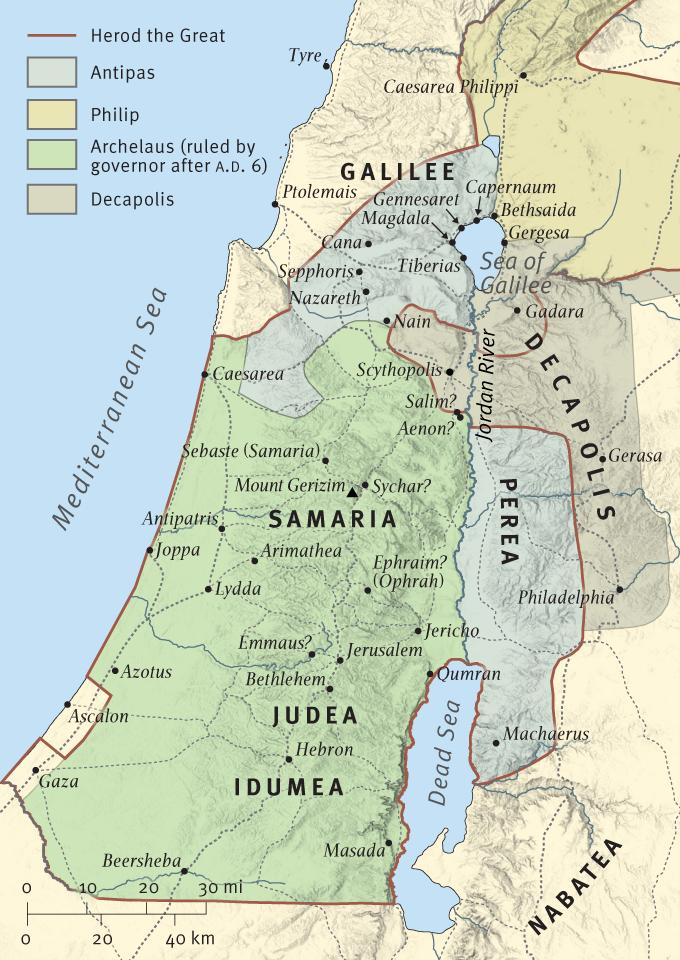

John the son of Zebedee wrote this Gospel. He was a Palestinian Jew, one of the 12 disciples, and a member of Jesus’ inner apostolic circle. He was referred to as the disciple “whom Jesus loved” (13:23). John also wrote 1–3 John and Revelation. He likely wrote his Gospel account between A.D. 70 (the date of the destruction of the temple) and A.D. 100 (the reputed end of John’s life). It was likely written from Ephesus in Asia Minor (modern-day Turkey), one of the most important cities of the Roman Empire at the time. His original audience consisted of Jews and Gentiles living in the larger Greco-Roman world in Ephesus and beyond, toward the close of the first century A.D.
The theme of John’s Gospel is that Jesus is the long-awaited, promised Messiah and Son of God. By believing in Jesus, people have eternal life (see 20:30–31).
As evidence that Jesus is the Messiah, John relies on several selected messianic signs performed by Jesus and a series of witnesses to Jesus. These include the Scriptures, John the Baptist, Jesus himself, God the Father, Jesus’ miraculous works, the Holy Spirit, and John himself.
The events of the Gospel of John take place in Palestine, incorporated into the Roman Empire in 63 B.C. Appointed by the Romans as king over the Jews in 37 B.C., Herod the Great ruled until his death in 4 B.C. The Romans divided his kingdom among his descendants.
